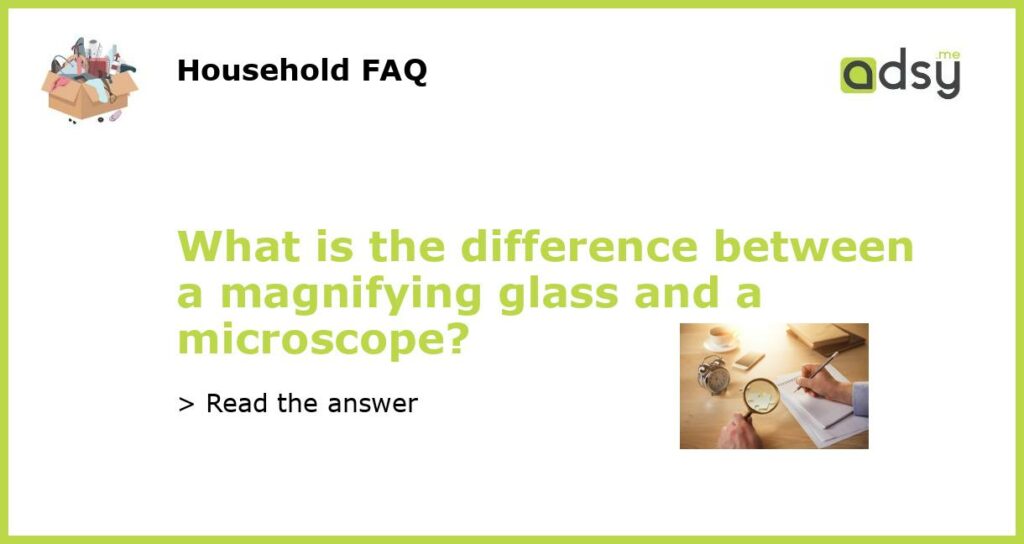Understanding the Basics: Magnifying Glass vs. Microscope
If you’ve ever wondered about the differences between a magnifying glass and a microscope, you’re not alone. While the two devices are similar in their function of magnifying objects for closer inspection, they differ in their design and the level of magnification they provide.
The Function and Design of a Magnifying Glass
A magnifying glass is a simple tool that consists of a single convex lens mounted within a frame or handle. The lens is usually made of glass or plastic and is shaped like a small circle or ellipse. To magnify an object, you hold the lens close to your eye and position the object within the focal point of the lens. This makes the object appear larger and more detailed than it does with the naked eye.
Magnifying glasses are commonly used for reading small print, examining small objects, and providing a closer view of something that is not easily seen with the naked eye. They are also popular in jewelry-making, watch repair, and other fine crafts.
The Function and Design of a Microscope
A microscope, on the other hand, is a more complex and precise tool that uses multiple lenses to provide much higher levels of magnification. Microscopes can magnify an object up to a million times or more, depending on their design and the quality of their lenses. They are essential tools for scientists, medical professionals, and researchers in many fields.
A basic microscope has two main components: the eyepiece and the objective lens. The eyepiece is the part that you look through, while the objective lens is the one closest to the object being viewed. There may be multiple objective lenses with different magnification levels, allowing you to switch between them for different levels of detail.
Choosing the Right Tool for the Job
The choice between a magnifying glass and a microscope depends on the task at hand. For simple tasks like reading small print or inspecting small objects, a magnifying glass is usually sufficient. However, for more complex tasks that require greater levels of magnification and precision, a microscope is the better choice.
When choosing a microscope, it is important to consider factors such as the level of magnification required, the quality of the lenses, and the specific features and capabilities of the microscope. Some microscopes are designed for specific purposes, such as clinical analysis or research, while others are more versatile and can be used for a wider range of tasks.
In summary, a magnifying glass and a microscope both serve the purpose of magnifying objects for closer inspection, but they differ in their design, level of magnification, and intended purpose. Understanding the differences between these two tools can help you choose the right one for the task at hand and ensure that you achieve the best possible results.






